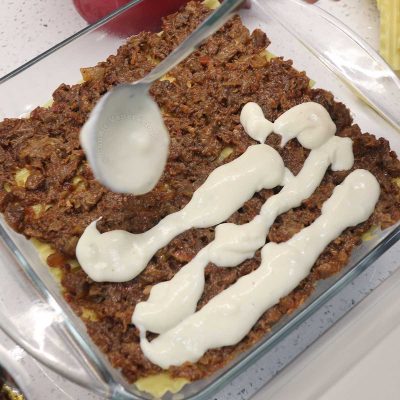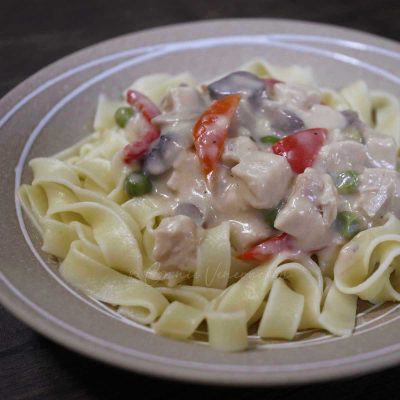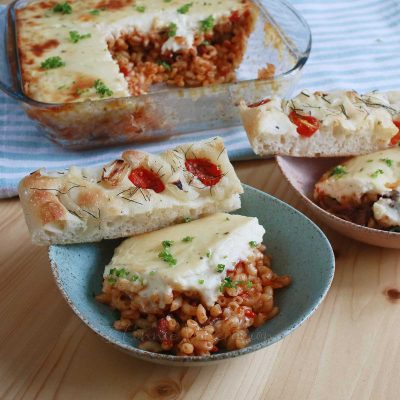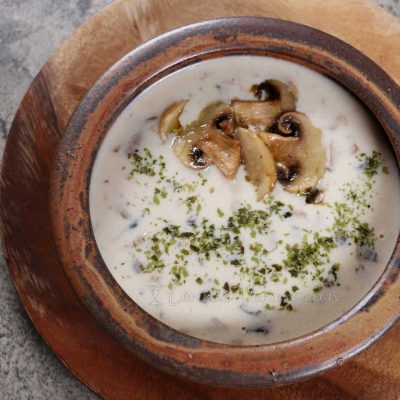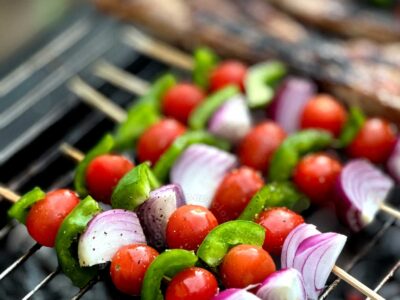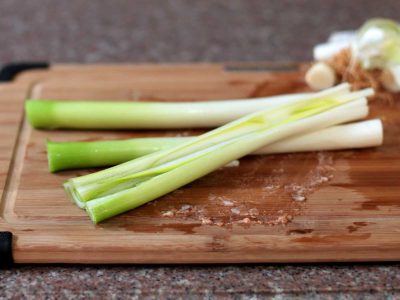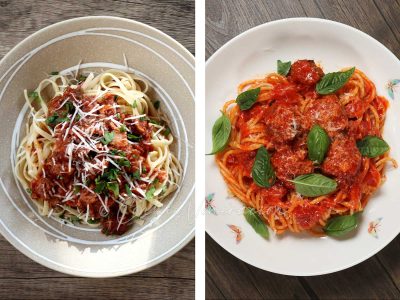Roux is pronouncedroo. It is a mixture of fat and flour, and is the base for many stews, sauces (including gravy) and soups. Chicken a la King is cooked with a roux.
It is a French thing but it doesn’t have to be intimidating. The process itself is simple and, once mastered, leads to the creation of a lot of delectable dishes.
Let’s make a roux.
Generally, you use equal amounts of fat and flour
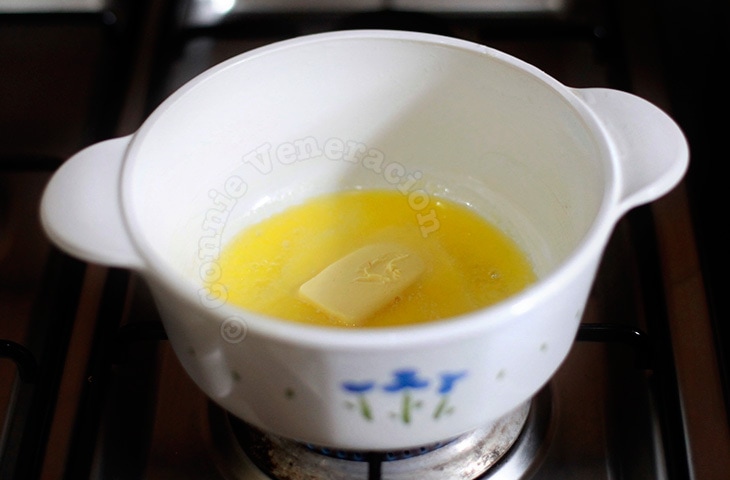
Start by melting butter in a pot. The ideal pot should be have a thick bottom because butter burns fast and you don’t want to hasten the burning even more by using a thin-bottomed pot.
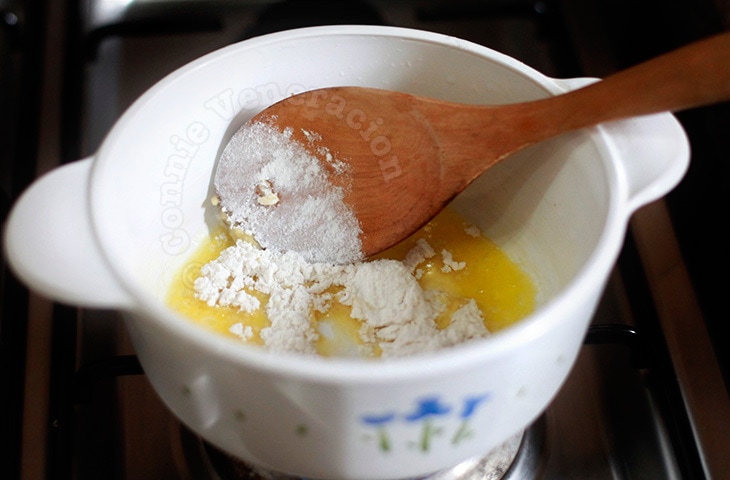
Once the butter is hot, add flour. The ratio is 1:1. In short, of you have three tablespoons of melted butter in the pot, you add three tablespoons of flour. That is the general rule. You’ll find recipes where a different ratio is used.
I prefer to add the flour all at once then stir quickly to make a smooth paste.
(Some cooks are more fussy. In Junior Masterchef Australia, one of the chefs made his roux by sifting the flour slowly over the hot butter and stirring as the flour as added. I don’t see the point.Really.)
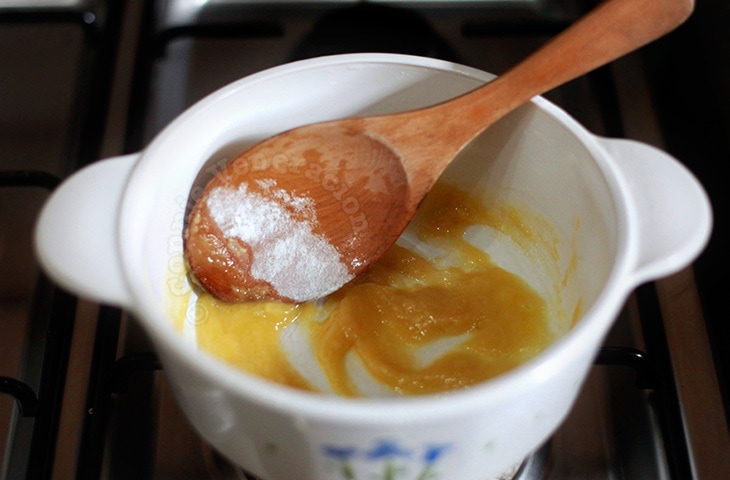
So, stir the flour into the butter until you have a thin pasty looking mixture. Cook the mixture over medium heat. How long depends on what you intend to use the roux for.
A roux can be white, blonde or brown
A white roux will thicken a dish but not add much flavor. A darker roux will impart a nutty flavor to the dish, the nuttiness coming from the toasting of the flour.
Cooking the roux for two to three minutes will yield a white roux, about five minutes for a blonde roux and a minute or two longer for a brown roux. The length of cooking is, of course, relative. Depending on the heat and the kind of pan you’re using, the cooking time may be shorter or longer.
Adding liquid: broth, milk or cream
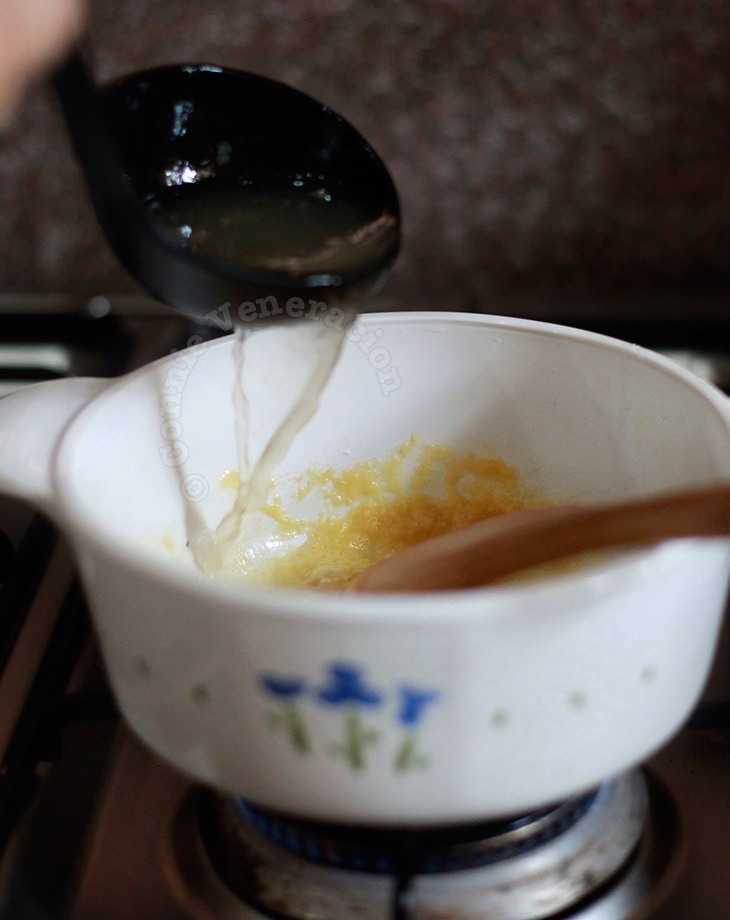
Once the desired amount of cooking is done, you add liquid. Depending on what recipe you’re following, the liquid may be broth, milk or cream. How much liquid you should add depends on whether you’re making soup, sauce or gravy.
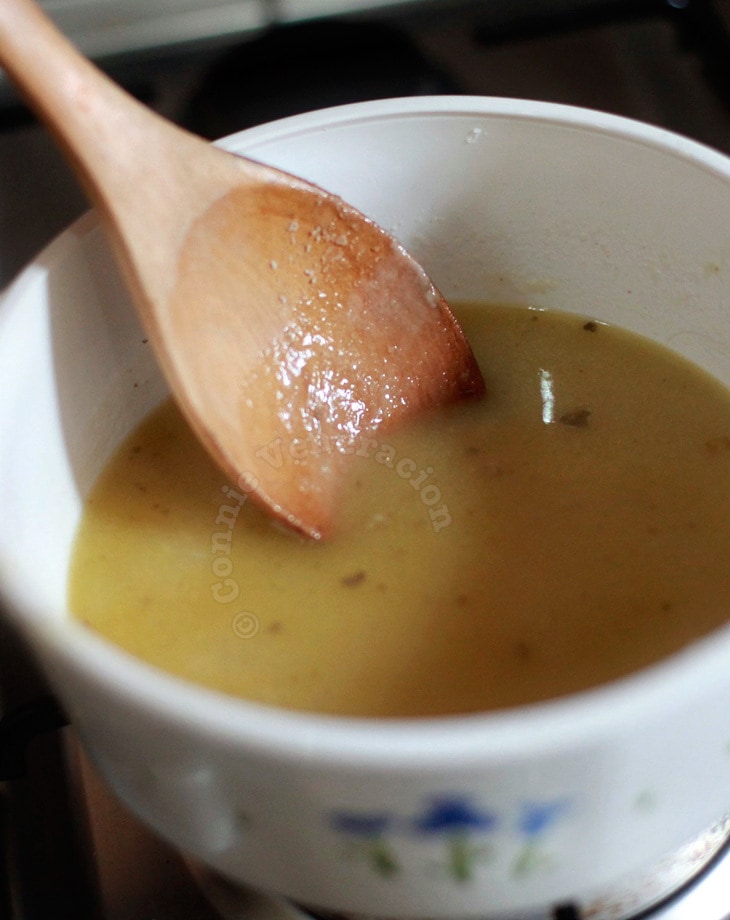
Pour in the liquid slowly and stir as you pour to prevent lumps from forming.
Recipes with roux
Béchamel sauce
We rarely make lasagna without Béchamel sauce. I used to prepare it but, these days, my daughter, …
Chicken à la King
Cubed chicken fillets, fresh button mushrooms, bell peppers and sweet peas swimming in a buttery and …
Baked mac and cheese
Slow cooker beef ragu, pasta and Mornay sauce are assembled in an oven-safe dish and baked until …
Cream of mushroom soup
Opening a can is easy and convenient, but once you’ve tried real cream of mushroom soup, it’s hard …
Broccoli and carrot chowder
If you’re not a fan of soup with clear broth, you’ll love chowder. It’s thick and creamy, and there …

